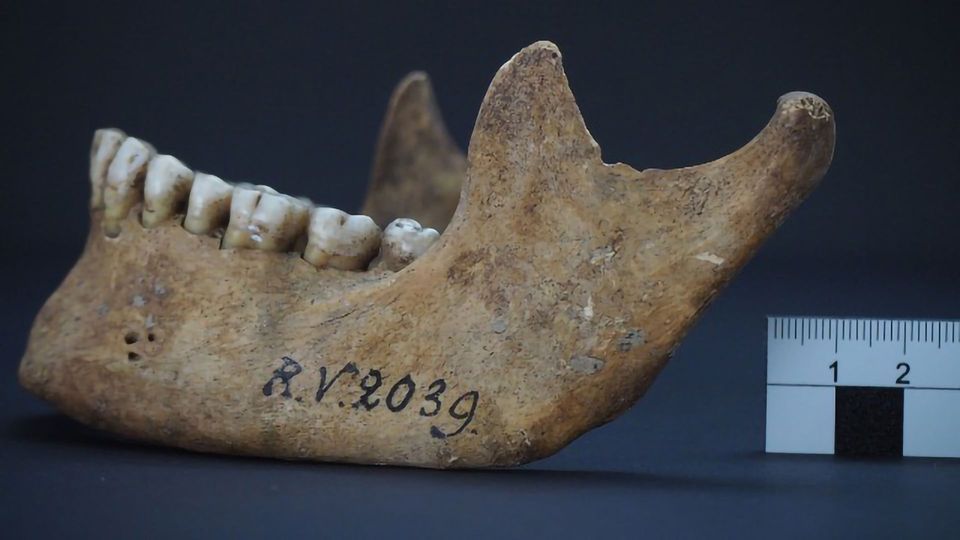Earliest Strain of Bubonic Plague Bacteria Identified in Neolithic Site

Complete the form below to unlock access to ALL audio articles.
Researchers have identified a strain of the bacteria behind the Black Plague in the remains of a neolithic hunter-gatherer who died 5,000 years ago.
Yersinia pestis (Y. pestis) is perhaps the most notorious bacteria in history. This gram-negative, rod-shaped microorganism causes septicemic, pneumonic and bubonic plagues. It was the pathogen behind the Black Death, a medieval pandemic that killed at least 75 million people. But New archeological findings suggests that humans started battling Y. pestis many centuries before the Black Death.
A rare find in two hundred years of fish bones
The research, published in Cell Reports, revolves around the genetic sequencing of skeletal remains from a prehistoric hunter-gatherer, dubbed RV 2039. RV lived 5,000 years ago in an area of present-day Latvia. His remains were found in the archeological site of Riņņukalns, essentially a massive mound of discarded shellfish and fish bones that accumulated over two hundred years. In Riņņukalns, RV’s remains were discovered alongside those of three other prehistoric humans.
RV was originally unearthed in the 1800s, but his skull and other bones went missing for over 60 years before being tracked down 10 years ago in the archives of the famous German physician Rudolf Virchow.

The Riņņukalns site, a Stone Age shell midden on the banks of the Salaca River near the outflow from Lake Burtniek. Credit: Harald Lübke, ZBSA, Schloss Gottorf
In the current study, the genetic analysis showed that RV was infected with a strain of Y. pestis that is the earliest sample of the bacteria ever recovered. It is part of a lineage, the research suggests, that likely emerged just a few hundred years after Y. pestis is likely to have first split from its predecessor, Yersinia pseudotuberculosis, which causes Far East scarlet-like fever.
A less deadly predecessor
In comparison to its medieval, pandemic-causing descendent, the bacteria RV was infected with appeared to be a rather less dangerous and infectious strain. The authors gathered this from several clues:
- RV’s strain lacked a key gene that permitted the bacterium to use fleas as a vector, a change that meant the bacterium could be much more easily transmitted to humans (and which caused such rapid spread during the Black Death)
- RV had a high number of Y. pestis gene fragments in his DNA and likely had the infection in his bloodstream, but was buried carefully, suggesting there was little concern of transmission when he laid to rest
- None of the other hunter-gatherers buried alongside RV had any traces of the bacterium
While the authors reckon that the bacterium was RV’s likely cause of death, they also believe he could have been living with the infection for some time. In contrast, the pathogen behind the Black Death killed 80% of its victims within eight days.
The findings, say the authors, have implications not only for our understanding of this deadly bacterium’s history, but also for wider studies of how Europe’s population changed over the prehistoric period. Other studies have suggested that evidence of prehistoric Y. pestis is linked to sudden mass shrinkages of the population during the Great Decline.
But the new study’s senior author, Ben Krause-Kyora, head of the aDNA Laboratory at the University of Kiel in Germany, said in a press release that the team’s findings suggest that rarer cases emerging independently were a more likely answer. "Isolated cases of transmission from animals to people could explain the different social environments where these ancient diseased humans are discovered. We see it in societies that are herders in the steppe, hunter-gatherers who are fishing, and in farmer communities – totally different social settings but always spontaneous occurrence of Y. pestis cases," says Krause-Kyora.
These occurrences seem more indicative of a slow-moving, harder-to-catch infection – RV likely acquired the bacteria after being bitten by an infected animal – than the rapid, deadly respiratory bacteria that Y. pestis would become. As the rapidly evolving mutants of SARS-CoV-2 have shown, pathogens are an ever-evolving threat.
Reference:
Susat J, Lübke H, Immel A, et al. A 5,000-year-old hunter-gatherer already plagued by Yersinia pestis. Cell Reports. 2021;35(13). doi:10.1016/j.celrep.2021.109278




